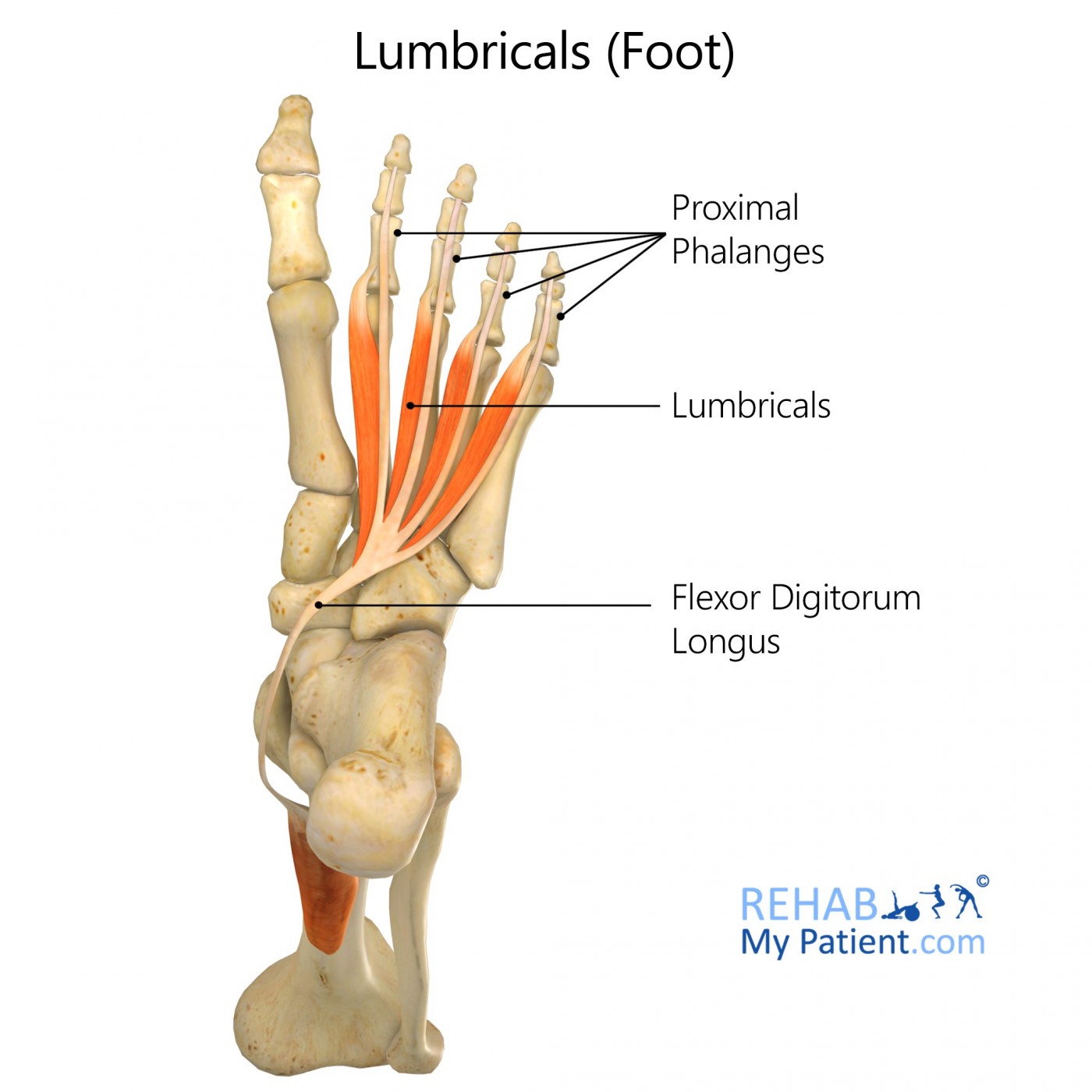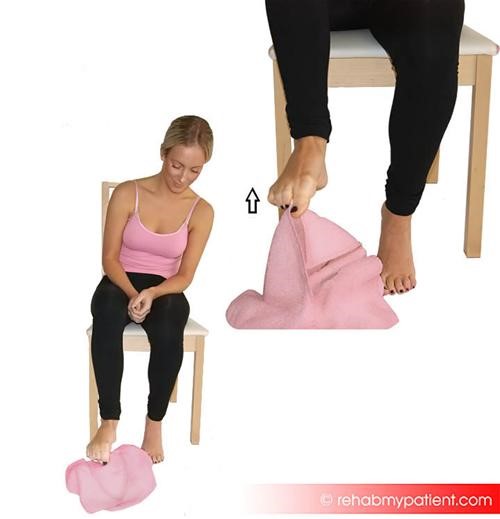Lumbricals (foot)
Posted on 27th Jul 2020 / Published in: Toe

General information
Lumbrical foot muscles start at the tendons of the flexor digitorum longus and end at the tendons that go inside the lesser toes.
Literal meaning
Worm muscle.
Interesting information
Lumbrical foot muscles are comprised of four small skeletal muscles that aid in curling the lesser toes and help provide stabilisation during standing. Lumbrical foot muscles are part of a group of muscles called intrinsic muscles that are most active when walking or running in the position when the leg is in mid-swing.
Numerous foot injuries like tarsal tunnel syndrome and metatarsalgia affect the intrinsic muscle system as a whole. Injuries pertaining specifically to the lumbrical foot muscles are not so common. Possible tears of the lumbricals can occur through fast walking or running. Overuse of the muscles or lack of proper stretching are prime causes for lumbrical tears. Anti-inflammatories are not good treatments for lumbrical tears. To determine the severity of the tear, a sonogram can determine how long it will take to recover from the injury. It is important to rest the injured foot and follow the treatment advice from the physician. Common treatments include rest, physical therapy with ultrasound therapy, and stretching exercises.
Origin
Medial borders of long flexor tendons.
Insertion
Proximal phalanges and extensor tendons of the four lateral toes.
Function
Flexion of the metatarsophalangeal joints.
Extension of the interphalangeal joints.
Nerve supply
Medial and lateral plantar nerves.
Blood supply
Medial and lateral plantar arteries.

Relevant research
An assessment addressed how foot intrinsic muscle fatigue affects pronation. The assessment of pronation included the use of a navicular drop test. Several factors contribute to maintaining the medial longitudinal arch (MLA) and if one those factors is not functioning correctly pronation will occur. There are links between hyperpronation and such syndromes as tarsal tunnel syndrome, metatarsalgia, plantar fasciitis, and medial tibial stress syndrome. Dysfunction of the intrinsic muscles may lead to hyperpronation. Experiments showed that after intrinsic foot muscles reached fatigue that pronation increased, showing that intrinsic foot muscles control pronation during motionless stance. By further interpreting this study, strengthening intrinsic foot muscles may help with hyperpronation, thus preventing painful foot injuries.
Headlee, D, Leonard, J, Hart, J, Ingersoll, C, Hertel, J. (2008). “Fatigue of the plantar intrinsic foot muscles increases navicular drop”. Journal of Electromyography and Kinesiology. 18: 420-425.
Lumbricals (of the foot) exercises
Towel crunches
Place your foot on a towel and crunch the toes, grabbing the towel with the toes. Complete three sets of ten repetitions. If this is easy, replace the towel with a pen or pencil and grab with the toes.

Towel toe pull
Sit on the floor with foot extended out in front. Hold the ends of the towel and loop the middle over the toes. Keep the knee straight with a flexed foot (toes pointed upward). Pull the ends of the towel, which will pull the toes toward the body. Hold for twenty seconds. Repeat on opposite side. Complete this stretch once a day, every other day.

Sign UP
Sign up for your free trial now!
Get started with Rehab My Patient today and revolutionize your exercise prescription process for effective rehabilitation.
Start Your 14-Day Free Trial